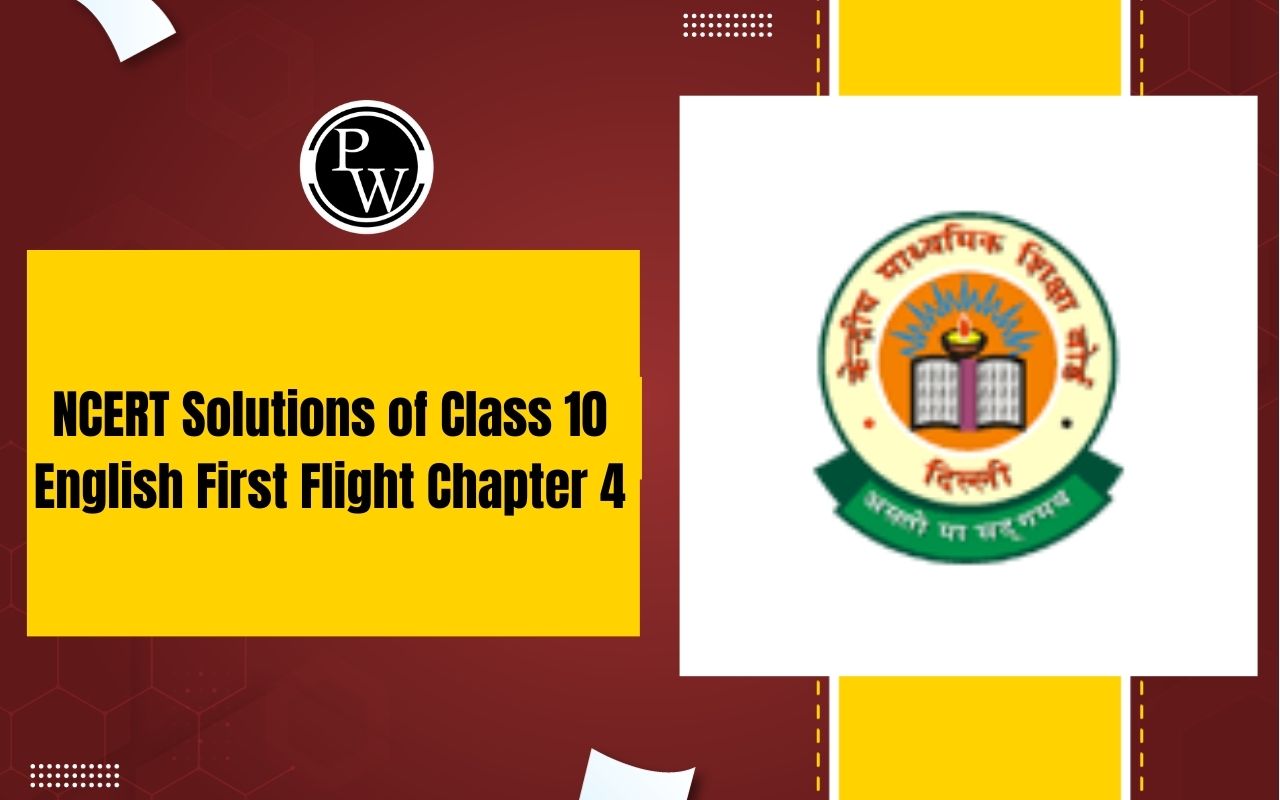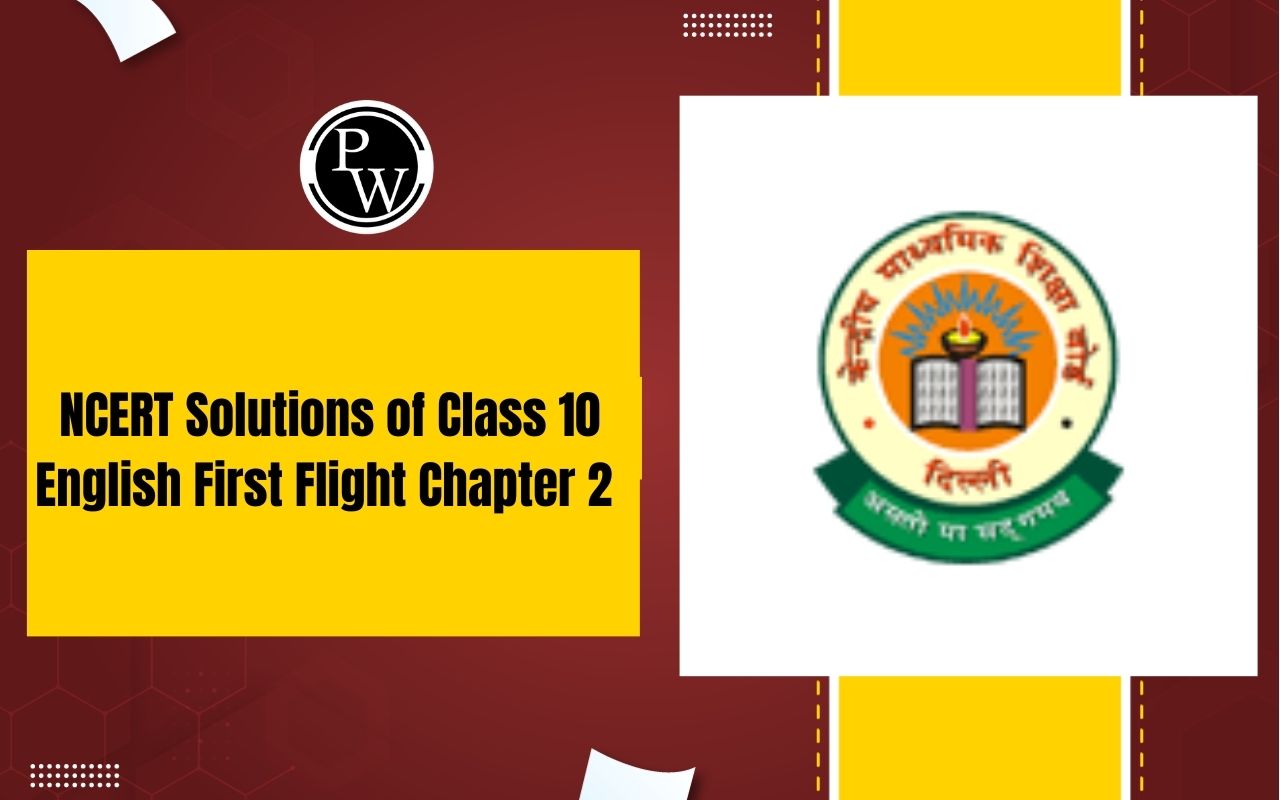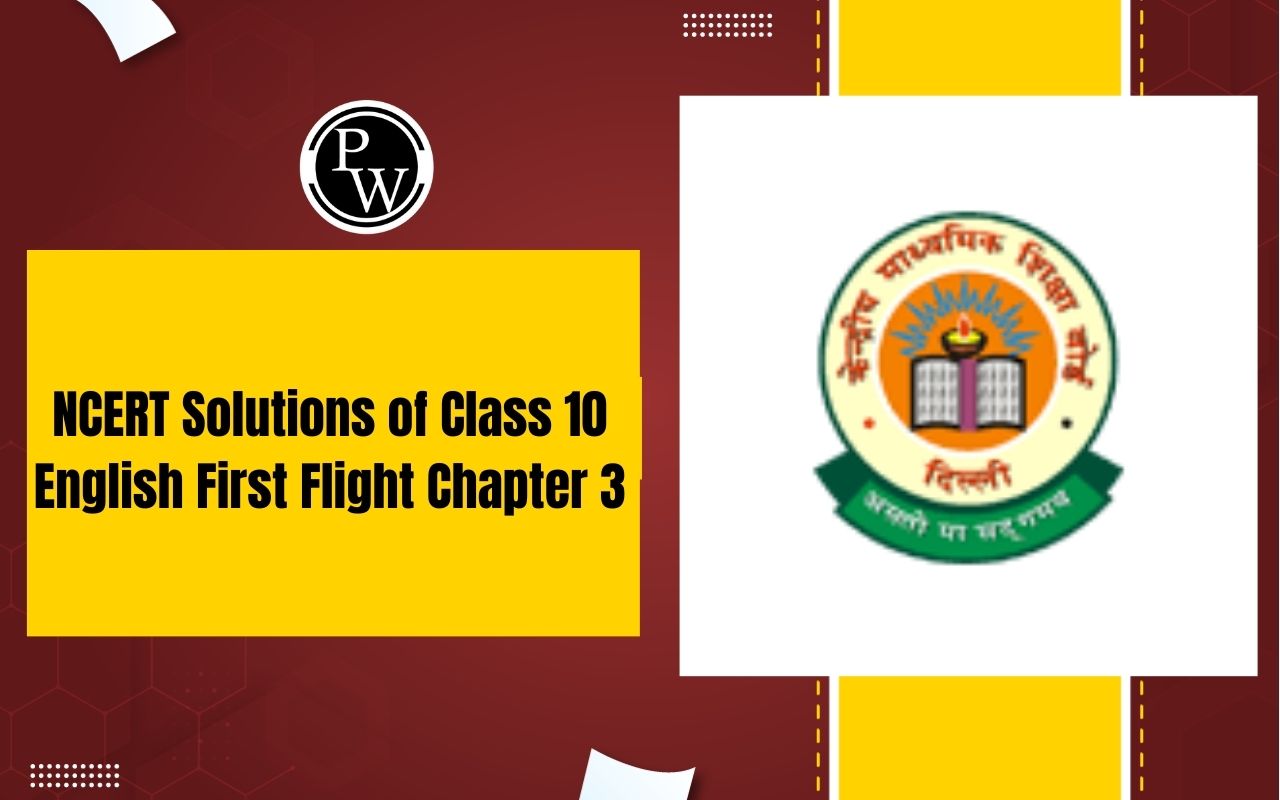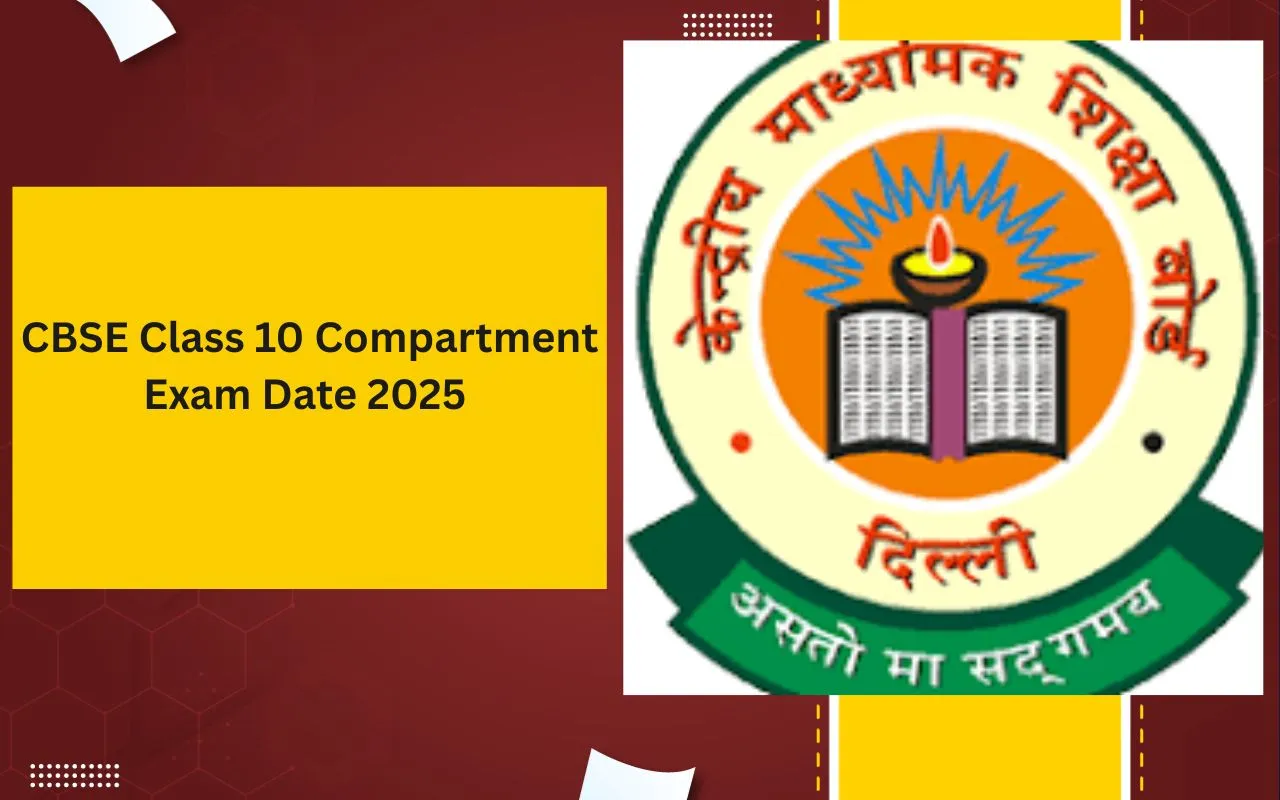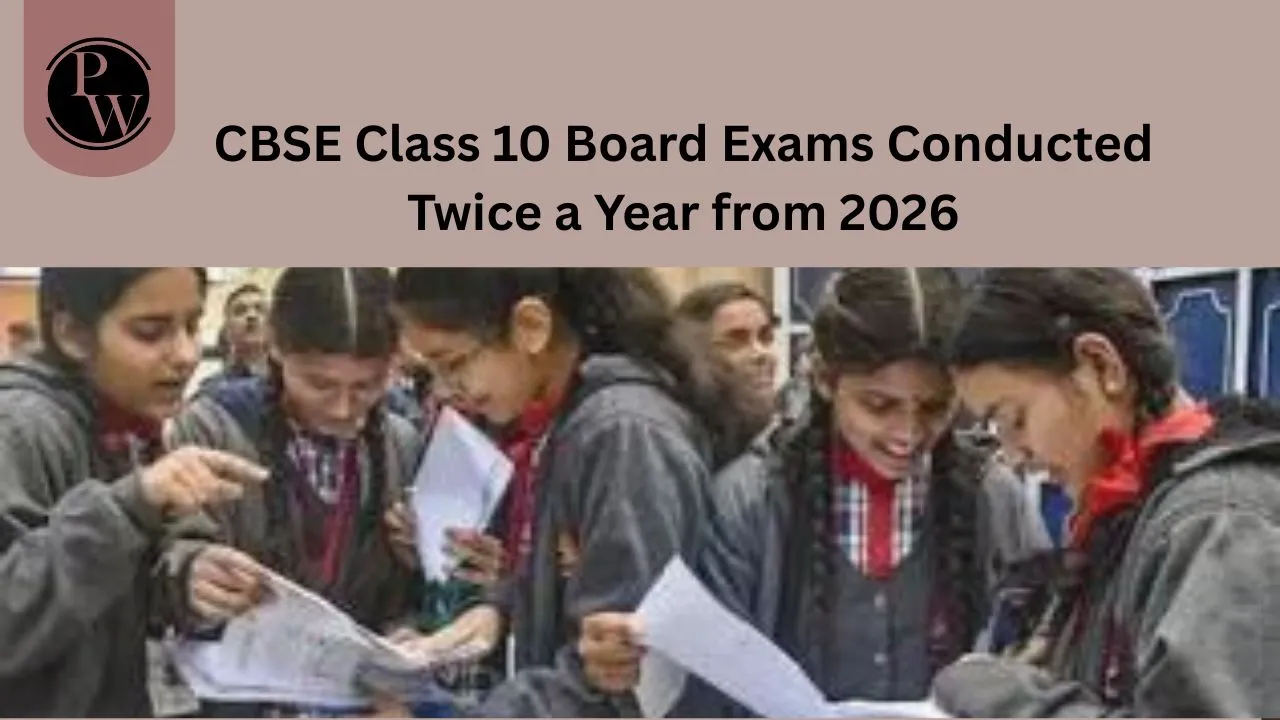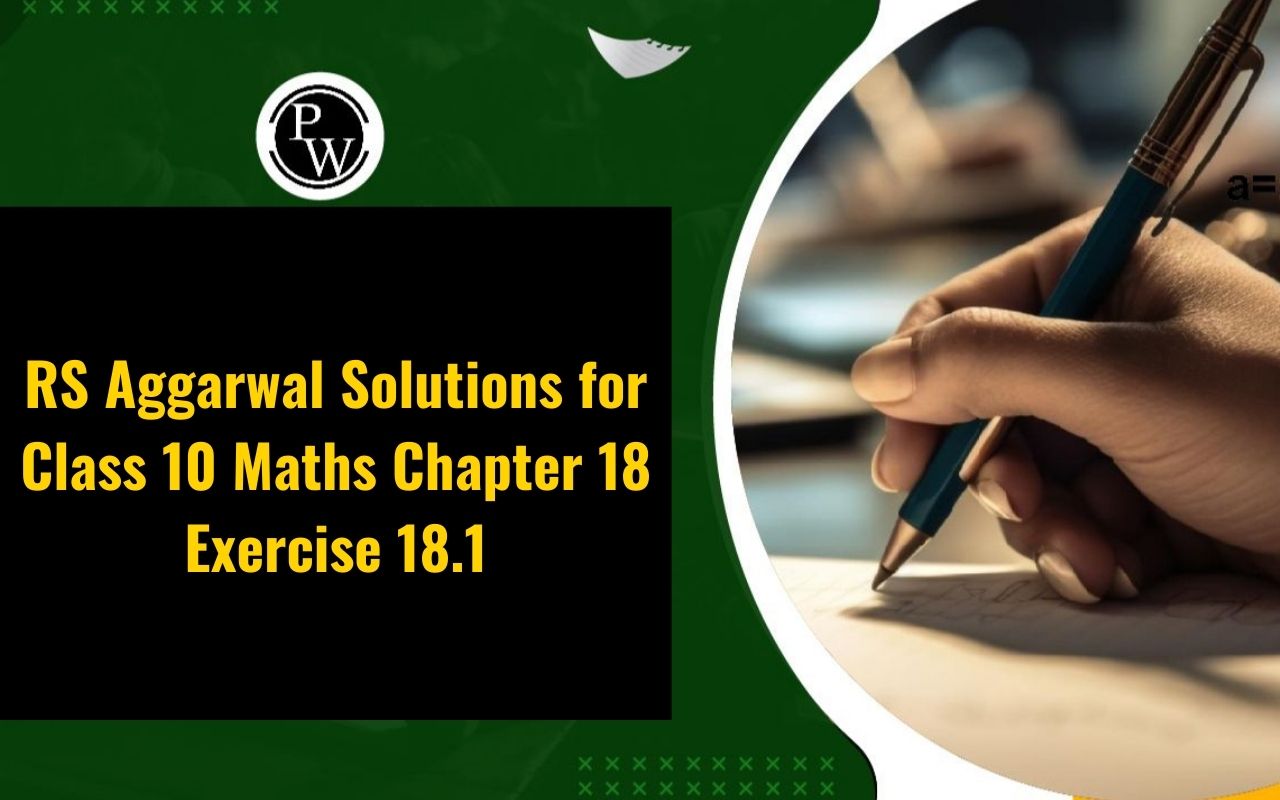
RS Aggarwal Solutions for Class 10 Maths Chapter 18 Exercise 18.1: RS Aggarwal Solutions for Class 10 Maths Chapter 18 Exercise 18.1 provide detailed and step-by-step guidance on problems related to the areas of circles, sectors, and segments.
This exercise helps students understand and solve problems involving the calculation of areas in various geometric shapes.RS Aggarwal Solutions for Class 10 Maths Chapter 18 Exercise 18.1 Overview
RS Aggarwal Solutions for Class 10 Maths Chapter 18 Exercise 18.1prepared by the subject experts from Physics Wallah. These solutions break down each problem into manageable steps making it easier for students to understand and apply the concepts effectively. The expert preparation ensures that the solutions cover all key aspects of the exercise helping students to build a solid foundation in this important topic.RS Aggarwal Solutions for Class 10 Maths Chapter 18 Exercise 18.1 PDF
RS Aggarwal Solutions for Class 10 Maths Chapter 18 Exercise 18.1 are available in a PDF format. This PDF contains detailed solutions to all the problems in Exercise 18.1 focusing on the areas of circles, sectors, and segments. You can download the PDF using the link provided below to enhance your study and improve your understanding of this important chapter.RS Aggarwal Solutions for Class 10 Maths Chapter 18 Exercise 18.1 PDF
RS Aggarwal Solutions for Class 10 Maths Chapter 18 Areas of Circle Exercise 18.1
Below we have provided RS Aggarwal Solutions for Class 10 Maths Chapter 18 Exercise 18.1 for the ease of the students –Q. The circumference of a circle is 39.6 cm. Find its area.
Q. The area of a circle is 98.56 c m . Find its circumference.
Q. The sum of the radii of two circles is 7 cm, and the difference of their circumferences is 8 cm. Find the circumferences of the circles.
Q. A racetrack is in the form of a ring whose inner circumference is 352 m and outer circumference is 396 m . Find the width and the area of the track.
 Given: Inner circumference of racetrack (in the ring form)
=
352
m
Outer circumference of racetrack
=
396
m
Let the radius of inner track be
r
2
π
r
=
352
[
∵
Circumference of the circle
=
2
π
r
]
⇒
2
×
22
7
×
r
=
352
⇒
r
=
352
×
7
2
×
22
⇒
r
=
56
m
let the radius of outer track be
R
2
π
R
=
396
⇒
2
×
22
7
×
R
=
396
⇒
R
=
396
×
7
2
×
22
⇒
R
=
63
m
∴
Width of track
=
radius of outer track
−
radius of inner track
=
63
−
56
=
7
m
Area of the track
=
Area of outer track
−
Area of the inner track
=
π
R
2
−
π
r
2
[
∵
Area of the circle
=
π
(
r
a
d
i
u
s
)
2
]
=
π
(
R
2
−
r
2
)
=
π
(
R
−
r
)
(
R
+
r
)
[
∵
(
a
2
−
b
2
)
=
(
a
−
b
)
(
a
+
b
)
]
=
22
7
×
(
63
−
56
)
(
63
+
56
)
=
22
7
×
7
×
119
=
2618
m
2
Hence, the area of the track is
2618
m
Given: Inner circumference of racetrack (in the ring form)
=
352
m
Outer circumference of racetrack
=
396
m
Let the radius of inner track be
r
2
π
r
=
352
[
∵
Circumference of the circle
=
2
π
r
]
⇒
2
×
22
7
×
r
=
352
⇒
r
=
352
×
7
2
×
22
⇒
r
=
56
m
let the radius of outer track be
R
2
π
R
=
396
⇒
2
×
22
7
×
R
=
396
⇒
R
=
396
×
7
2
×
22
⇒
R
=
63
m
∴
Width of track
=
radius of outer track
−
radius of inner track
=
63
−
56
=
7
m
Area of the track
=
Area of outer track
−
Area of the inner track
=
π
R
2
−
π
r
2
[
∵
Area of the circle
=
π
(
r
a
d
i
u
s
)
2
]
=
π
(
R
2
−
r
2
)
=
π
(
R
−
r
)
(
R
+
r
)
[
∵
(
a
2
−
b
2
)
=
(
a
−
b
)
(
a
+
b
)
]
=
22
7
×
(
63
−
56
)
(
63
+
56
)
=
22
7
×
7
×
119
=
2618
m
2
Hence, the area of the track is
2618
m
Q. A chord 10 cm long is drawn in a circle whose radius is 5 √ 2 cm. Find the areas of both the segments.
[ T a k e π = 3.14. ]

Given, a chord AB of length 10 cm and radius = OA = OB = 5 √ 2 cm.
Construction: Draw OC perpendicular to AB. Now, AC = BC = 10 2 = 5 cm [The perpendicular drawn from the centre of a circle to a chord always bisect the chord.] In △ OAC, s i n x = A C O A s i n x = 5 5 √ 2 s i n x = 1 √ 2 s i n x = s i n 45 o x = 45 o Similarly, ∠ B O C = 45 o ⇒ ∠ A O B = ∠ A O C + ∠ B O C = 45 o + 45 o = 90 o We know that, area of sector = θ 360 × π r Therefore, area of sector OAB = θ 360 × π r 2 = 90 360 × π ( 5 √ 2 ) 2 = 50 π 4 = 25 2 × 22 7 = 275 7 = 39.28 c m 2 Again, in △ OAC, c o s x = O C O A c o s 45 o = O C 5 √ 2 1 √ 2 = O C 5 √ 2 O C = 5 c m Therefore, area of △ OAB = 1 2 × O C × A B = 1 2 × 5 × 10 = 25 c m Now, area of minor segment = Area of sector OAB - Area of △ OAB = 39.28 c m 2 - 25 c m = 14.28 c m Similarly, area of major segment = Area of circle - Area of minor segment ⇒ Area of major segment = π r 2 − 14.28 = 22 7 × ( 5 √ 2 ) 2 − 14.28 = 157.1428 − 14.28 = 142.86 c mQ. The short and long hands of a clock are 4 cm and 6 cm long respectively. Find the sum of distances travelled by their tips in 2 days.
[ Take π = 3.14 ]
Q. A horse is placed for grazing inside a rectangular field 70 m by 52 m. It is tethered to one corner by a rope 21 m long. On how much area can it graze ? How much area is left ungrazed ?
 Area of the grazed field
=
θ
360
×
π
r
=
90
360
×
π
(
21
)
2
=
1
4
×
π
(
21
)
2
=
346.5
m
Total area of the field
=
70
×
52
=
3640
m
Area left ungrazed = Total area of the field - Area of the grazed field
=
3640
−
346.5
=
3296.5
m
Area of the grazed field
=
θ
360
×
π
r
=
90
360
×
π
(
21
)
2
=
1
4
×
π
(
21
)
2
=
346.5
m
Total area of the field
=
70
×
52
=
3640
m
Area left ungrazed = Total area of the field - Area of the grazed field
=
3640
−
346.5
=
3296.5
m
Q. A horse is tethered to one corner of a field which is in the shape of an equilateral triangle of side 12 m. If the length of the rope is 7 m, find the area of the field which the horse cannot graze. Take √ 3 = 1.732. Write the answer correct to 2 places of decimal.
Q. Four cows are tethered at the four corners of a square field of side 50 m such that each can graze the maximum unshared area. What area will be left ungrazed ?
[ Take π = 3.14 ] If they are tethered at the corners they can map out quarter circles within the square. For these to be maximised without sharing the quarter circles must have a radius of
1
2
of one side of the square, 25m.
Now we have four quarter circles about each corner, touching at the middle of each side.
From here we know that the full area of the field is
50
×
50
=
2500
m
We can calculate the grazed area as 1 circle of radius 25m
(
4
×
1
4
c
i
r
c
l
e
s
)
The area of this is equal to
π
×
r
2
=
3.14
×
25
×
25
=
1963.50
m
Now the ungrazed area is the total minus the ungrazed
=
2500
−
1963
=
537
m
If they are tethered at the corners they can map out quarter circles within the square. For these to be maximised without sharing the quarter circles must have a radius of
1
2
of one side of the square, 25m.
Now we have four quarter circles about each corner, touching at the middle of each side.
From here we know that the full area of the field is
50
×
50
=
2500
m
We can calculate the grazed area as 1 circle of radius 25m
(
4
×
1
4
c
i
r
c
l
e
s
)
The area of this is equal to
π
×
r
2
=
3.14
×
25
×
25
=
1963.50
m
Now the ungrazed area is the total minus the ungrazed
=
2500
−
1963
=
537
m
Q. If a square is inscribed in a circle, find the ratio of the areas of the circle and the square.
 Let side of square be x cms inscribed in a circle.
Radius of circle
(
r
)
=
1
2
(diagonal of square)
=
1
2
(
√
2
x
)
=
x
√
2
Area of square =
(
s
i
d
e
)
2
=
x
2
Area of circle
=
π
r
2
=
π
(
x
√
2
)
2
=
π
x
2
2
Area of circle
Area of square
=
π
x
2
2
x
2
=
π
2
=
π
:
2
Ratio is
π
:
2
Let side of square be x cms inscribed in a circle.
Radius of circle
(
r
)
=
1
2
(diagonal of square)
=
1
2
(
√
2
x
)
=
x
√
2
Area of square =
(
s
i
d
e
)
2
=
x
2
Area of circle
=
π
r
2
=
π
(
x
√
2
)
2
=
π
x
2
2
Area of circle
Area of square
=
π
x
2
2
x
2
=
π
2
=
π
:
2
Ratio is
π
:
2
Q. The area of a circle inscribed in an equilateral triangle is 154 c m . Find the perimeter of the triangle. [ Take √ 3 = 1.73. ]
 Given area of inscribed circle = 154
c
m
2
Let the radius of the incircle be r.
⇒ Area of this circle
=
π
r
=
154
(
22
7
)
×
r
2
=
154
⇒
r
2
=
154
×
(
7
22
)
=
49
∴ r = 7 cm
Recall that incentre of a circle is the point of intersection of the angular bisectors.
Given ABC is an equilateral triangle and AD = h be the altitude.
Hence these bisectors are also the altitudes and medians whose point of intersection divides the medians in the ratio 2: 1
∠ADB = 90° and OD =
(
1
3
)
AD
That is
r
=
(
h
3
)
h
=
3
r
=
3
×
7
=
21
c
m
Let each side of the triangle be a, then
Altitude of an equilateral triangle is
(
√
3
2
)
times its side
ie,
h
=
(
√
3
a
2
)
a
=
2
h
√
3
=
2
×
21
√
3
=
2
×
21
√
3
3
=
14
√
3
∴
a
=
14
√
3
c
m
We know that perimeter of an equilateral triangle = 3a
=
3
×
14
√
3
=
42
√
3
=
42
×
1.73
=
72.66
cm
Given area of inscribed circle = 154
c
m
2
Let the radius of the incircle be r.
⇒ Area of this circle
=
π
r
=
154
(
22
7
)
×
r
2
=
154
⇒
r
2
=
154
×
(
7
22
)
=
49
∴ r = 7 cm
Recall that incentre of a circle is the point of intersection of the angular bisectors.
Given ABC is an equilateral triangle and AD = h be the altitude.
Hence these bisectors are also the altitudes and medians whose point of intersection divides the medians in the ratio 2: 1
∠ADB = 90° and OD =
(
1
3
)
AD
That is
r
=
(
h
3
)
h
=
3
r
=
3
×
7
=
21
c
m
Let each side of the triangle be a, then
Altitude of an equilateral triangle is
(
√
3
2
)
times its side
ie,
h
=
(
√
3
a
2
)
a
=
2
h
√
3
=
2
×
21
√
3
=
2
×
21
√
3
3
=
14
√
3
∴
a
=
14
√
3
c
m
We know that perimeter of an equilateral triangle = 3a
=
3
×
14
√
3
=
42
√
3
=
42
×
1.73
=
72.66
cm
Q. The diameters of the front and rear wheels of a tractor are 80 cm and 2 m respectively. Find the number of revolutions that a rear wheel makes to cover the distance which the front wheel covers in 800 revolutions.

Four equal circles are described about the four corners of a square so that each touches two of the others, as shown in the figure. Find the area of the shaded region, if each side of the square measures 14 cm.
 Here, the radius of each circle = a
∴ Each side of square = 2a
∴ Area of square
=
(
2
a
)
2
=
4
a
2
Area of all the four sectors area equal,
∴ Area of 4 sectors = 4
×
area of each sector
=
4
×
90
360
×
π
a
2
=
4
×
1
4
×
π
a
2
=
π
a
2
=
22
7
a
2
Required area = Area of square – area of 4 sectors
=
4
a
2
−
22
7
a
2
=
a
2
(
4
−
22
7
)
=
a
2
×
6
7
=
6
a
2
7
Hence, area between the circles is
(
6
7
a
2
)
sq units.
Q.
Here, the radius of each circle = a
∴ Each side of square = 2a
∴ Area of square
=
(
2
a
)
2
=
4
a
2
Area of all the four sectors area equal,
∴ Area of 4 sectors = 4
×
area of each sector
=
4
×
90
360
×
π
a
2
=
4
×
1
4
×
π
a
2
=
π
a
2
=
22
7
a
2
Required area = Area of square – area of 4 sectors
=
4
a
2
−
22
7
a
2
=
a
2
(
4
−
22
7
)
=
a
2
×
6
7
=
6
a
2
7
Hence, area between the circles is
(
6
7
a
2
)
sq units.
Q.

In the given figure, O is the centre of the circle with AC = 24 cm, AB = 7 cm and △ BOD = 90 ∘ . Find the area of shaded region.
[Use π = 3.14]
Q. Three semicircles each of diameter 3 cm, a circle of diameter 4.5 cm and a semicircle of radius 4.5 cm are drawn in the given figure. Find the area of the shaded region.

 Area of semi-circle PQR =
1
2
π
(
9
2
)
2
=
81
π
8
c
m
Area of region circle, A =
π
(
9
4
)
2
=
81
π
16
c
m
Area of region (B + C) =
π
(
3
2
)
2
=
9
π
4
c
m
Area of region D =
1
2
π
(
3
2
)
2
=
9
π
8
c
m
Area of shaded region = Area of the semicircle PQR - Area of circle A - Area of the region (B + C) + Area of region D
=
81
π
8
c
m
2
-
81
π
16
c
m
2
-
9
π
4
c
m
2
+
9
π
8
c
m
2
=
63
π
16
c
m
=
99
8
c
m
= 12.37 cm²
Area of semi-circle PQR =
1
2
π
(
9
2
)
2
=
81
π
8
c
m
Area of region circle, A =
π
(
9
4
)
2
=
81
π
16
c
m
Area of region (B + C) =
π
(
3
2
)
2
=
9
π
4
c
m
Area of region D =
1
2
π
(
3
2
)
2
=
9
π
8
c
m
Area of shaded region = Area of the semicircle PQR - Area of circle A - Area of the region (B + C) + Area of region D
=
81
π
8
c
m
2
-
81
π
16
c
m
2
-
9
π
4
c
m
2
+
9
π
8
c
m
2
=
63
π
16
c
m
=
99
8
c
m
= 12.37 cm²
Q. A horse is tethered to one corner of a field which is in the shape of an equilateral triangle of side 12 m. If the length of the rope is 7 m, find the area of the field which the horse cannot graze. Take √ 3 = 1.732. Write the answer correct to 2 places of decimal.
Benefits of RS Aggarwal Solutions for Class 10 Maths Chapter 18 Exercise 18.1
- Detailed Explanations : The solutions provide step-by-step explanations for each problem helping students understand the methods and concepts involved in calculating areas of circles, sectors, and segments.
- Concept Clarity : By working through the solutions, students can clarify their understanding of complex concepts and improve their problem-solving skills in geometry.
- Exam Preparation : The solutions are designed to help students prepare effectively for exams by showing them how to tackle similar questions that might appear on their test papers.
- Self-Assessment : Students can use the solutions to check their answers and understand where they might have made mistakes facilitating self-assessment and improvement.
- Time Management : With well-organized solutions students can learn to solve problems more efficiently, which helps in managing their exam time better.

